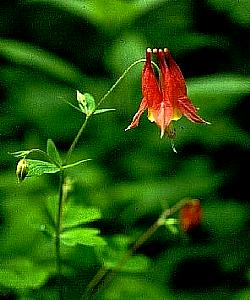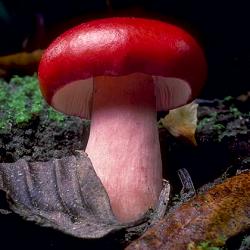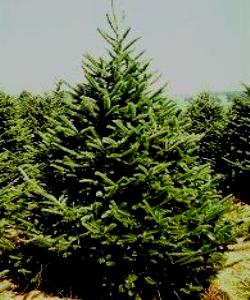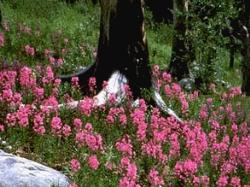The plant life in a coniferous forest consists of giant trees. The majority of all the plants is evergreen. Many of the plants have needles or scale-like leaves.

This picture shows that the plants in a coniferous forest is mostly evergreen and large trees with needles.

The Columbines have red-spurred, drooping, bell-like flowers. During the spring and early summertime, the plants have yellow centers, as shown in the picture. These plants are native to Manitoba, Ontario, and South Quebec. They also attract hummingbirds. The scientific name for these plants is Aquilegia Canadensis. Aquilega translates to "eagle" and they call it this because of the flower's talon-like spurs on each bloom. Canadensis comes from the word, Canada.

Over to the left is a mushroom called the Rosy Russula. The Rosy Russula has bright red to dark red coloring, fading into a pink or lavender pink cap. Sometimes on this organsim there are white or yellow blotches. The Rosy Russula has white flesh, mild odor, and a bitter taste. Most often they are found beneathpine trees in early spring.

Balsam Fir Trees are medium sized trees that grow to be 40-60 feet high and 1- 1 1/2 feet in diameter. The name "Balsam Fir Tree" comes from many sticky blisters found in the tree's bark. Sometimes, the tree is called "Blister Pine". The evergreen can also live from 150-200 years old.

This luscious plant is called the Fireweed. This weed prooduces large quantities of pollen in winter or early spring. Honey bees come by often. This plant is an annual plant, which means they grow back each year. It derives its name from its habitat of growing freely in moist open woods and grows best on newly burnt fallows.





 RSS Feed
RSS Feed